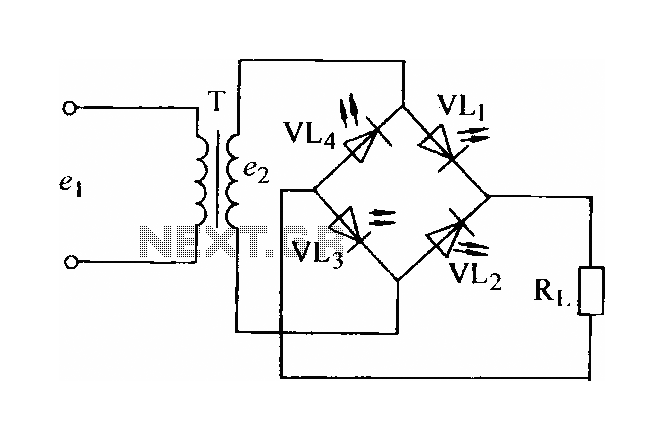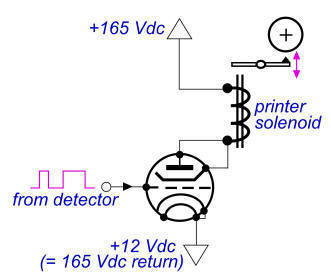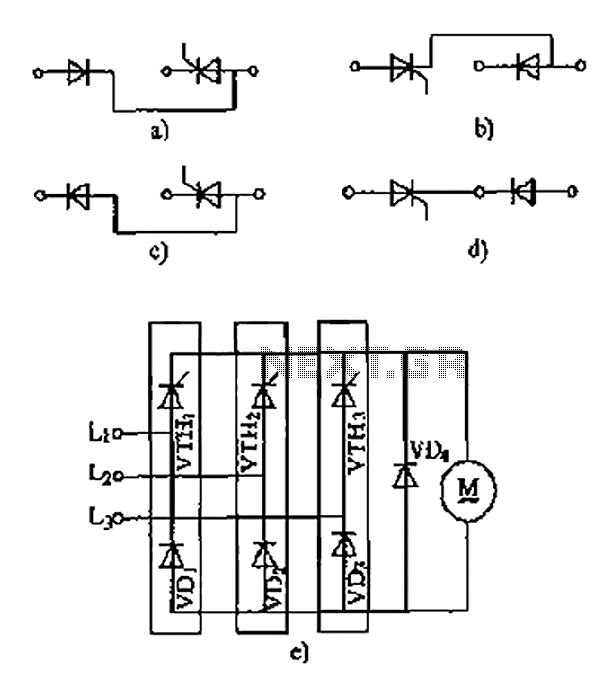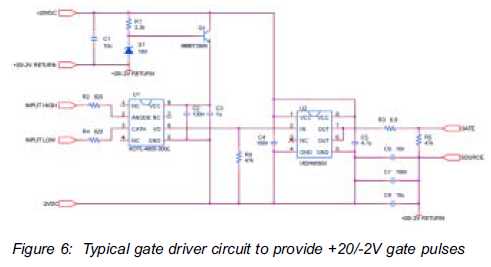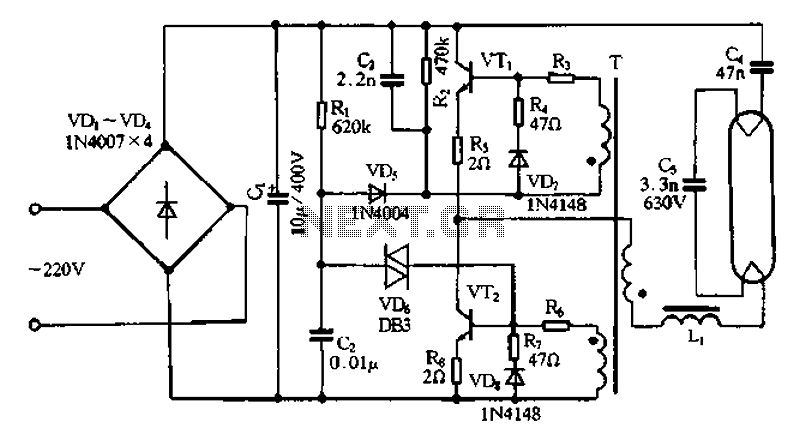
GCA-60 silicon rectifier charging circuitry

There are a total of four types of specifications for a three-phase bridge rectifier circuit. The output voltage is regulated by a TY regulator.
The three-phase bridge rectifier circuit is designed to convert three-phase alternating current (AC) into direct current (DC). This circuit configuration consists of six diodes arranged in a bridge formation, allowing for efficient rectification of the three-phase input. The diodes are typically rated for high voltage and current to accommodate the demands of industrial applications.
In this circuit, the three-phase AC supply is connected to the anodes of the diodes, while the cathodes are connected together to form the positive output terminal. The negative output terminal is connected to the common point of the diodes. During each half-cycle of the AC waveform, two diodes conduct, allowing current to flow to the load. This results in a pulsating DC output, which can then be smoothed using filtering techniques.
The output voltage from the rectifier is further regulated by a TY regulator. The TY regulator is a voltage regulation device that ensures a stable output voltage despite variations in the input voltage or load conditions. It typically employs feedback control mechanisms to adjust the output voltage to a desired level, thus improving the overall performance and reliability of the power supply system.
The specifications of the circuit can vary based on the application requirements, such as the voltage and current ratings, as well as the type of load being driven. Overall, this configuration is essential for converting three-phase power into a usable DC form for various electronic and industrial applications.It is a total of four kinds of specifications. Three-phase bridge rectifier circuit. The output voltage from the regulator TY regulation.
The three-phase bridge rectifier circuit is designed to convert three-phase alternating current (AC) into direct current (DC). This circuit configuration consists of six diodes arranged in a bridge formation, allowing for efficient rectification of the three-phase input. The diodes are typically rated for high voltage and current to accommodate the demands of industrial applications.
In this circuit, the three-phase AC supply is connected to the anodes of the diodes, while the cathodes are connected together to form the positive output terminal. The negative output terminal is connected to the common point of the diodes. During each half-cycle of the AC waveform, two diodes conduct, allowing current to flow to the load. This results in a pulsating DC output, which can then be smoothed using filtering techniques.
The output voltage from the rectifier is further regulated by a TY regulator. The TY regulator is a voltage regulation device that ensures a stable output voltage despite variations in the input voltage or load conditions. It typically employs feedback control mechanisms to adjust the output voltage to a desired level, thus improving the overall performance and reliability of the power supply system.
The specifications of the circuit can vary based on the application requirements, such as the voltage and current ratings, as well as the type of load being driven. Overall, this configuration is essential for converting three-phase power into a usable DC form for various electronic and industrial applications.It is a total of four kinds of specifications. Three-phase bridge rectifier circuit. The output voltage from the regulator TY regulation.
